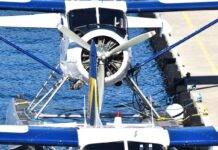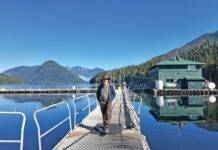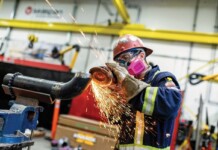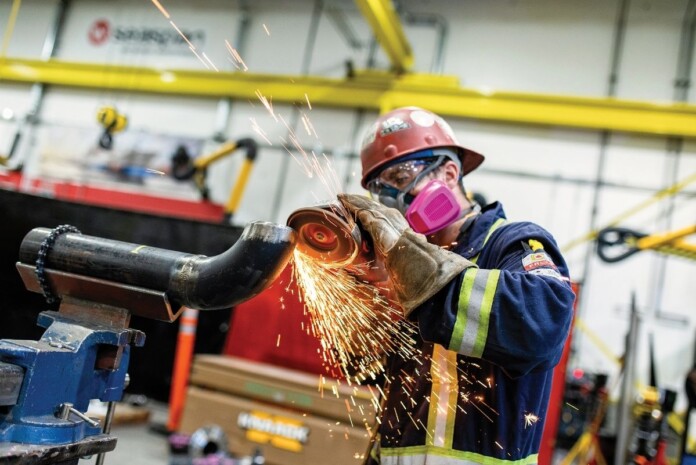
Say the word “Seaspan” in the Pacific Northwest and you think of ship-building facilities, commercial ferries and tugboats plying the waters of port-side cities from North Vancouver, near Lonsdale Quay, to the Victoria Shipyards.
Now the corporation is reaching inland, and looking to the future, with a new facility up the Malahat that utilizes robotics and cutting-edge software to produce pipe spools — pre-fabricated sections of pipes that can include components like elbows, flanges and the like — that are then delivered to the main shipyards to install on both new and existing vessels.
In particular, these pipe units are being shipped over to the North Shore for installation on the new, heavy Polar Icebreaker, a key component of Canada’s National Shipbuilding Strategy.
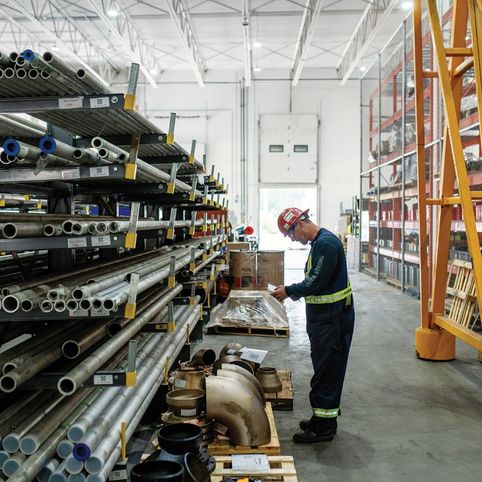 “Investing in this facility really has given us good control of what our production is, to support the vessels that we’re building in [North] Vancouver and allows us to be a lot more agile,” says Neil Fraser, program manager at the three-month-old, 40,000-square-foot Ark Road facility, located just off the south end of Shawnigan Lake Road. “When you combine all of it into one location, it does streamline the workflow quite a bit. There’s a lot of positives to having it all, like in a one-stop shop so you’re not shipping parts all over town to different suppliers, different manufacturers doing different things. There’s a good upside to consolidating and having all your processes in one location.”
“Investing in this facility really has given us good control of what our production is, to support the vessels that we’re building in [North] Vancouver and allows us to be a lot more agile,” says Neil Fraser, program manager at the three-month-old, 40,000-square-foot Ark Road facility, located just off the south end of Shawnigan Lake Road. “When you combine all of it into one location, it does streamline the workflow quite a bit. There’s a lot of positives to having it all, like in a one-stop shop so you’re not shipping parts all over town to different suppliers, different manufacturers doing different things. There’s a good upside to consolidating and having all your processes in one location.”
Pipe-spool technology has been kicked up a notch at the Ark Road complex, where Seaspan has integrated PipeCloud — a new software from a Finland-based company — into its pre-production process.
“It’s a full-digital workflow: there’s no more paper, you’re not releasing printed drawings and having to collect drawings back when you have revisions,” Fraser says of the intelligent software. “You can shut them off online and you can put new drawings into the package, the data collection is all digital, so you’re not losing bits of paper. Everything is linked, via PipeCloud.”
Where prefabricating pipe has traditionally involved manual planning, paper documents and different tools, PipeCloud’s digitalization of the process creates a connected system that automates planning, co-ordinates and tracks progress at every stage until completion.
PipeCloud reached out to Seaspan about two years ago, and a Seaspan team including Fraser went to Finland to see the software at work — and were sold on it.
“At the end of February we went live with it in Victoria at the shipyard itself, and later moved up here [to Shawnigan Lake] and became live with every work centre set up with touch-screen control,” he says.
The technology has increased efficiency, but hasn’t come at the expense of staffing, says Fraser, with some heavy lifting coming courtesy of another source. “We’ve implemented two spool-welding robots, which is a real benefit to the workforce,” he says. “We have managed to extend the workers’ careers — some of them would age out of being able to do some of this type of work, and it allows us to keep people who otherwise would move on to other things, working within the industry. It’s a real plus.”


